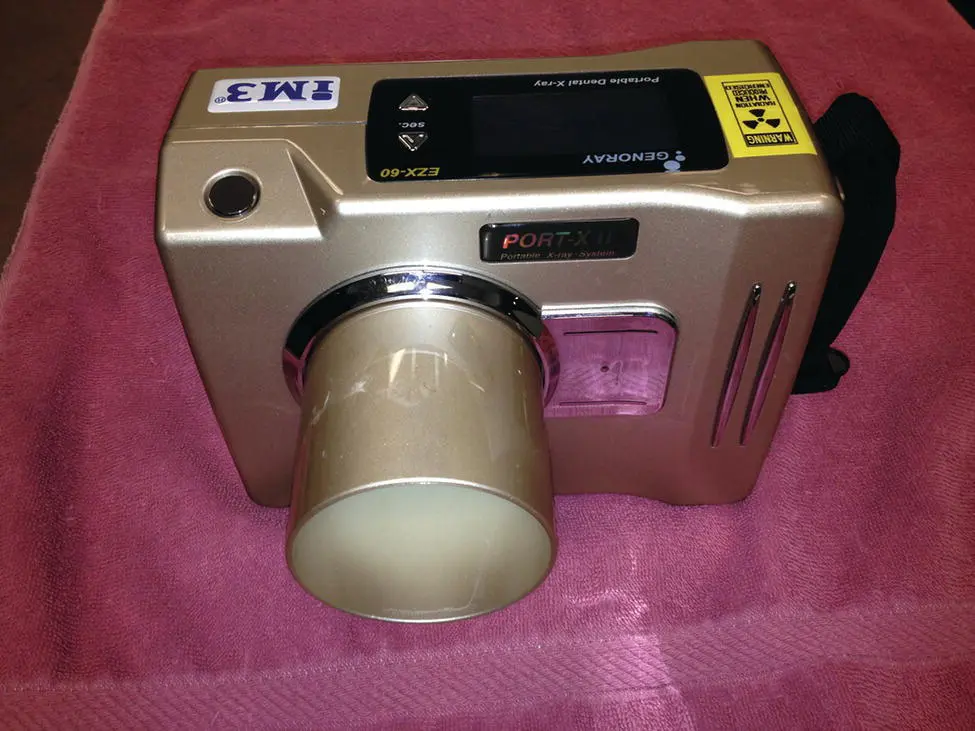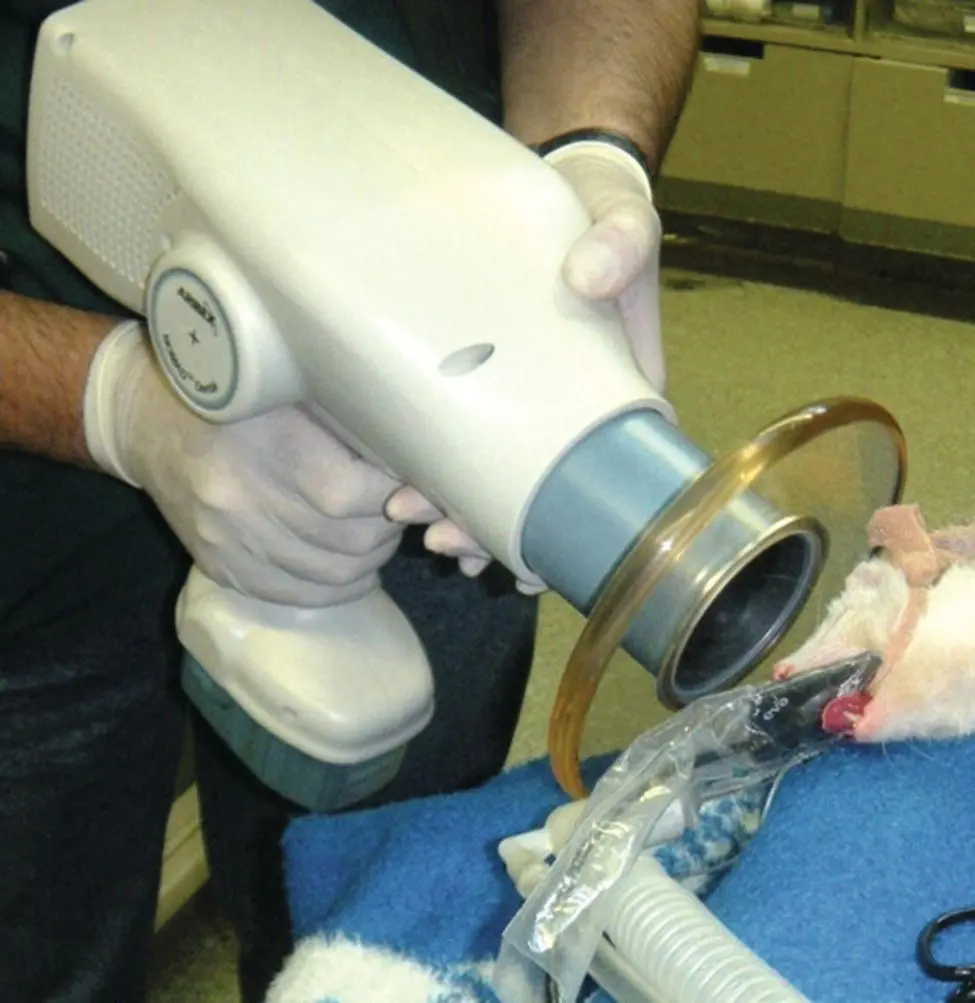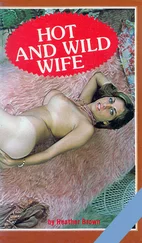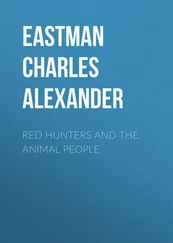The tribosphenic dentition of early cretaceous mammals was not adapted to the demands of an herbivorous diet. The origin of tribosphenic dentition was one of mammalian adaptation's major changes in the terrestrial flora during this period. The herbivores of the Cretaceous period were rodent‐like creatures that branched off the early mammalian stock before the origin of the tribosphenic dentition. The Cretaceous period was a long 71‐million‐year period, 135–66 million years BCE. This is one‐third the total history of the class of Mammalians. A more rapid dental evolution began during the Cenozoic, 64 million years BCE and evolved without dinosaurian competition.
In 1907, Osborn‐Cope presented four principle tenets of molar evolution that were later revised to a degree by Hershovitz:
First Principle: The primitive tritubercular type. The tritubercular was ancestral to many if not all of the molar teeth.
Second Principle: The origin of the tritubercular type from a single reptilian cone by the addition of lateral denticles.
Third Principle: Cusp addition or differentiation. New denticle cusps or smaller cones on the sides of original reptilian cone added by budding or outgrowth.
Fourth Principle: Reversed upper and lower triangles. In the lower molars, the reptile cone is external and the two denticles internal, while in the upper molars, the reverse is the case [4].
Patterson's view found that a broad shelf labial to the paracone and metacone, carrying a stylocane and other cusps were charlatanistic to primitive tribosphenic upper molars. Stylar shelf forms are still present in some marsupials.
Tribosphenic dentition evolution during the Jurassic period is distinguished by the morphology and function of molariform teeth. The upper molars have the basic trigon, consisting of a paracone, metacone and protocone. A broad shelf labial to the paracone and metacone was characteristic to the primitive tribosphenic upper molar. The lower molars were divided into a higher mesial trigonid formed by three cusps and a lower talonid basin that received the upper protocone. They could produce only two kinds of action during mastication: food could only be crushed between the major segments of the upper and lower molars.
The functions of tribosphenic dentition and the time and place of their origin suggest that their evolution was one of the adaptations of mammals to a diet based on the expanding fauna. The late Cretaceous period saw an increase in the modifications of the tribosphenic molar. The extinction of many mammalian lineages does not seem to be connected to any tooth type or sources of food.
Tooth numbers have evolved from many to few in number. Early mammals tended to have more teeth than recent mammals indicating a reduction in tooth numbers. Hence, in any group, the species with the largest number of teeth is likely to be the most primitive and somewhat less intelligent. However, the modern river dolphin has approximately 206 homodont teeth, but remains one of the more intelligent mammals. Reference the Appendix III Dental Formulas at the back of this book to compare the number of teeth with intelligence.
1 1 Romer, A.S. (1945). Vertebrate Paleontology, 3e. Chicago (IL): The University of Chicago Press.
2 2 Romer, A.S. (1968). Teeth and Dentition in the Different Groups of Vertebrates. In: Comparative Odontology, by B. Peyer, translated and edited by Rainer Zangerl. Library of Congress Catalog Card number 66‐20578. University of Chicago Press.
3 3 Peyer, B. (1968). Teeth and Dentition in the Different Groups of Vertebrates. In: Comparative Odontology, by Bernhard Peyer, translated and edited by Rainer Zangerl, with a forward by Alfred S. Romer with permission. Library of Congress Catalog Card number 66‐20578, 144. University of Chicago Press.
4 4 Hershkovitz, P. (1971). Basic Crown Patterns and Cusp Homologies of Mammalian Teeth. In: Dental morphology and evolution (ed. A.A. Dahlberg), 95–150. Chicago: The University of Chicago Press.
3 Special Considerations Regarding Equipment and Instruments
Dentistry performed in wild animal sanctuaries and zoos is practiced differently than in the comforts of private companion animal practice. Anesthesia carries more risk for the hundreds of species encountered, and the staff in many sanctuaries often have limited expertise and equipment for monitoring and professionally supporting the long procedure times that may be required to carry out necessary treatments. Because of these limitations, and the condition of animals when rescued, many of the animals that need treatment have long‐standing dental problems, and the facility will be willing to allow only one chance for us to help them. Therefore, like the frontier physician who carried a small bag and made do with what he had, we too must make do with the equipment we bring with us. Excellent radiographs are often difficult to obtain in a sanctuary (field conditions), or zoo venue. Often, a clinician will have to work with what is available and physical diagnostics, combined with experience, may become the most useful tools.
Periodontology and periodontal therapy, both medical and surgical, is important to captive and wild animals. But, when considering periodontal therapy in humans, dogs or cats, periodontal therapy is a life‐long undertaking, ideally with constant, periodic re‐evaluation and therapeutic adjustments for this chronic, manageable but incurable disease. Most sanctuaries and zoos anesthetize their animals as often as they have to, but as seldom as they need to, because the anesthetic experience carries a much higher risk with these animals, and general anesthesia is necessary even merely to transport them, let alone to perform almost any dental procedure. Consequently, most of these animals will not have the luxury of repeated anesthetic experiences, so care must be directed to single‐stage (one‐time only) procedures. These procedures are usually in the form of root canal therapy, occasional surgical extractions, apically re‐positioned gingival flaps or modified surgical osteoplasty to treat periodontal disease.
This book is written for competent clinicians who have dental experience and, at the least, the proper inventory of materials and equipment to carry out endodontic and surgical treatment in companion animal practice. Periodontal therapy is discussed as a surgical one‐time treatment. These equipment setups will not be discussed here, but, some specialized instruments will be described that make treatment of large carnivores and herbivores possible. Very specialized instrumentation of tusks of various mammals is discussed further by Professor Gerhard Steenkamp in his section on Elephant dental therapeutics.
Clinicians should arrive at a facility carrying with them equipment, instruments, and supplies to manage endodontic and surgical needs, including pulp cap therapy, root canal therapy and surgical extractions, as well as being able to perform the occasional incisional or excisional biopsy, tonsillectomy or even a toe amputation when confronted with previously poorly performed procedures.
Following are some suggested types of equipment, instruments, and supplies that are helpful when treating large animals in zoos, sanctuaries and safari camps (see Figures 3.1– 3.24).

Figure 3.1 Hand held, battery operated, 2.0 mA X‐ray generator, distributed by iM3.
Source: Edward R. Eisner.

Figure 3.2Nomad, rechargeable battery‐operated, hand‐held X‐ray generator 2.25 mA.
Читать дальше













